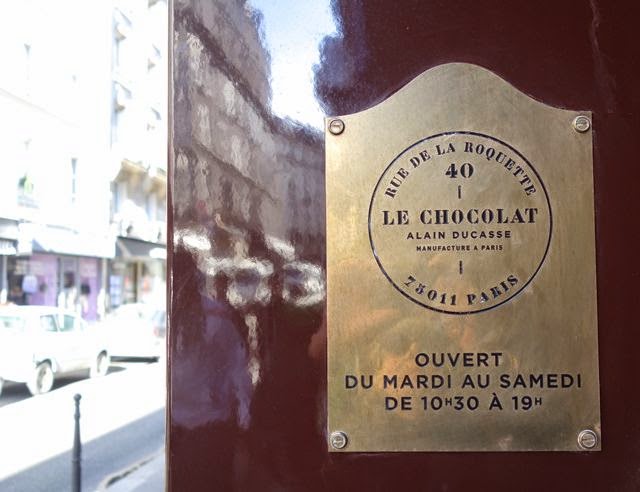Copyright RMN-Grand Palais (Musee d’Orsay)/Herve
Lewandowski
Venice:
Palazzo Ducale: Henri Rousseau – Archaic Naivety Exhibition. In the Doge’s apartments of Palazzo Ducale
right in the Piazza San Marco the exhibition Henri Rousseau – Archaic Naivety, until July 5. Henri Rousseau,
also known as Le Douanier, was a central figure in figurative art between the
end of the 19th century and the revolutionary period of the avant-garde
movement. Famous for his dreamlike atmospheres; forests and enchanted
landscapes, Rousseau (Laval, 1844 – Paris, 1910), has always been
impossible to pigeonhole. It is
pointless to label his work: even the way the painter has been interpreted has
most often been the result of a series of misunderstandings; and yet the force
of his painting, snubbed by critics but appreciated by artists, is the
expression of a phenomenon that has no comparison in art between the 19th and
20th century.
Above. Henri Rousseau - La Charmeuse de Serpents – 1907 – oil
on canvas – Paris - Musee d'Orsay.
Henri
Rousseau – Archaic Naivety. With the special collaboration of the Musee d’Orsay
in Paris and under the patronage of the Soprintendenza per i Beni
Architettonici e Paesaggistici di Venezia e Laguna, the Fondazione Musei Civici
di Venezia, this extraordinary exhibition was produced by 24 Ore Cultura. It boasts forty masterpieces by Rousseau himself and sixty works for
the purposes of comparison. The project, arises from an idea by Gabriella Belli
and Guy Cogeval, (above) the exhibition’s commissioners, and shared and
developed with the collaboration of Laurence des Cars and Claire Bernardi.
Above.
Jean-Leon Gerome – Daphnis et Chloe – 1852 – oil on canvas.
Copyright - 2014 Foto Scala, Firenze-su concessione
Ministero Beni e Attività Culturali
Henri Rousseau – Archaic
Naivety. Such an event has never before
been held in Italy. Through a lively sequence of thematic sections, the
exhibition makes it possible to admire some of the French painter’s most famous
masterpieces, including Self-portrait (1889-90). The artist considered the
first “portrait-landscape” in the history of art, The Poultry Yard (1896-98),
which was bought by Kandinsky and exhibited in the first Blaue Reiter show in Munich. The painting The War
or the Ride of Discord (1894), above, painted by Rousseau with that innocent
eye that Ardengo Soffici, a firm supporter, defined as being full of
“child-like ingenuousness”.
Above-top. Henri
Rousseau - La Guerre-La chevauchee de la Discorde - 1894 ca. – oil on canvas
Above-bottom. Giovanni di ser Giovanni detto lo Scheggia (San
Giovanni Valdarno, Arezzo, 1406-Firenze, 1486) - Trionfo della Morte - 1465-1470 -
tempera su tavola - Siena, Museo Civico.
Palazzo
Ducale’s Camillo Tonini
Henri
Rousseau – Archaic Naivety. This research has given Rousseau’s oeuvre the right
critical and historical weight: the artist was a point of reference for the
great exponents of the historical avant-garde movements, for intellectuals like
Apollinaire and Jarry, for great collectors like Wilhelm Uhde, and for many
painters who preceded and went beyond the Cubist season. Artists such as
Cézanne and Gauguin, Redon and Seurat, Marc, Klee, Morandi, Carrà, Frida Kahlo
and Diego Rivera, not to mention Kandinsky and Picasso. All of these artists
are present in the show with works that fit in coherently with those painted by
Le Douanier in his brief but intense creative season between 1884 and 1910.
Above-left.
Robert Delaunay – Football – 1917 - watercolor on paper.
Above-right.
Henri Rouseau – Le Douanier – Les Joueurs de football – 1908 – oil on canvas.
Henri
Rousseau – Archaic Naivety. Alongside the
artists mentioned above, the exhibition presents a careful selection of Old
Masters including Liberale da Verona, Fede Galizia, Frans Post and Francisco Goya, they offer a wholly new critical investigation into that
inspiration stimulated by archaism, which over the centuries runs hand in hand
with classicism and of which
Rousseau’s oeuvre seems to mark the watershed between 19th and 20th century.
Rousseau’s oeuvre seems to mark the watershed between 19th and 20th century.
Above.
Artist Corrado Levi, who will be performing at Ca Rezzonico on May 10th
looks at Felix-Auguste Clement – Pendant Les Fetes du Bairam au Caire – 1866 –
oil on canvas.
Palazzo Ducale: Henri Rousseau – Archaic
Naivety - Prior-Hamblin School - Little Girl with Slate – 1845ca. – oil on
canvas
Henri Rousseau – L’Enfant a la Poupee – 1904-1905 – oil on canvas.
Fortuny
Museum’s Daniela Ferretti and the president of The Venice International
Foundation's Franca Coin
Copyright
RMN-Grand Palais (Musee d’Orsay)/Herve Lewandowski
Copyright
Banco de México Diego Rivera Frida Kahlo Museums Trust, Mexico, D.F.by SIAE
2015
Henri Rousseau – Archaic
Naivety. An “archaic candour” also emerges in the paintings
dedicated to wild nature and in his famous jungle scenes, of which no less that
seven will be on display – from the beautiful Snake Charmer (1907) to the Horse Attacked by a Jaguar (1910), as well as in his most bucolic views of
countryside and town. His still-lives and astonishing series of male and female
portraits (often of friends or family members) reveal Rousseau’s capacity for
recording the life of the lower middle class, the protagonist of a peaceful and
apparently innocuous suburban existence, and the characteristic force of a
wholly unique and original artist.
Above-top. Henri Rousseau - La Noce – 1905 – oil on canvas -
Paris, Musee de l'Orangerie - Collection J. Walter- P.Guillaume.
Above-bottom. Frida Kahlo (Coyoacan, Citta del
Messico, 1907-1954) -
Retrato de una Dama en Blanco –
1929 – oil on canvas – private collection, Berlin.











































